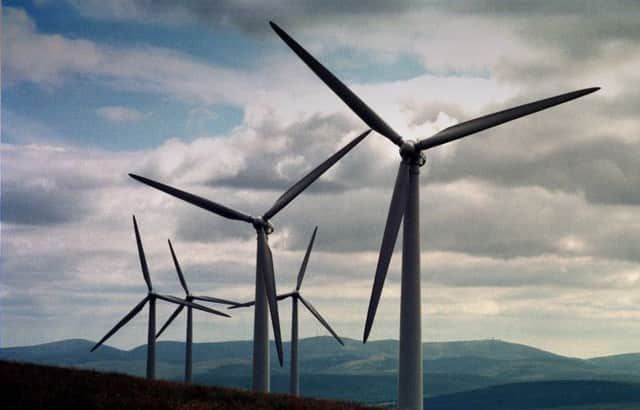‘Green powerhouse’ could meet electricity needs


WWF Scotland’s report used independent analysis by an engineering and energy consultancy to test the Scottish Government’s policy to decarbonise the country’s electricity supply over the next 15 years.
It found that an electricity system based on “proven renewables and increased energy efficiency” is a credible way of meeting the target.
Advertisement
Hide AdAdvertisement
Hide AdThe report also warned that, with no guarantee that carbon capture and storage (CCS) will be commercialised and rolled out in time, Scotland’s climate targets could be missed unless a safer route to reducing carbon emissions is followed.
Scotland can maintain and even build on its position as a net power exporter if it makes moderate progress to reduce demand for electricity and increase the rollout of hydro-pumped storage, the report says.
Lead author of the report for consultancy DNV GL, Paul Gardner, said: “Our technical analysis shows that a system with an extremely high proportion of renewable electricity generation located in Scotland can be secure and stable.
CONNECT WITH THE SCOTSMAN
• Subscribe to our daily newsletter (requires registration) and get the latest news, sport and business headlines delivered to your inbox every morning
“There is no technical reason requiring conventional fossil and nuclear generation in Scotland.
“Scotland has plenty of renewables in the pipeline to cut the carbon from its power supply by 2030, particularly if we see progress on reducing electricity demand. And crucially, Scotland can continue to be an electricity exporting nation.” Solar power met two-thirds or more of household electricity or hot water needs during 2014.
WWF Scotland’s climate and energy policy officer, Gina Hanrahan, said: “It’s great to see the vision for a secure, renewables-based future for Scotland independently tested and proven. It’s clear that Scotland doesn’t have to generate electricity from coal, gas or nuclear to ensure security of supply.
“We’d still like to see CCS tested at Peterhead, but given how slowly this technology is progressing, it makes sense to explore alternative paths to achieving the government’s own target.
Advertisement
Hide AdAdvertisement
Hide Ad“The report shows that not only is a renewable, fossil-fuel free electricity system perfectly feasible in Scotland by 2030, it’s actually the safe bet.
“Pursuing this pathway would allow Scotland to maintain and build on its position as the UK and Europe’s renewable powerhouse, cut climate emissions and continue to reap the jobs and investment opportunities offered by Scotland’s abundant renewable resources.”
December was a record month for wind power in Scotland, the organisation also revealed earlier this week.
Following the record final month, 2014 proved to be a “massive year” for wind and solar power in Scotland, the WWF revealed.
It found that wind turbines provided an estimated 8,958,130MWh of electricity to the National Grid, or an average of 746,510MWh each month – enough to supply the electrical needs of 98 per cent of Scottish households, or 2.36 million homes.
For homes fitted with solar PV panels, during June and July there was enough sunshine in Aberdeen, Edinburgh, Glasgow or Inverness to generate an estimated 100 per cent or more of the electricity needs of an average home, and 60 per cent or more in the same four cities during March, April, May, August, and September.
SCOTSMAN TABLET AND IPHONE APPS